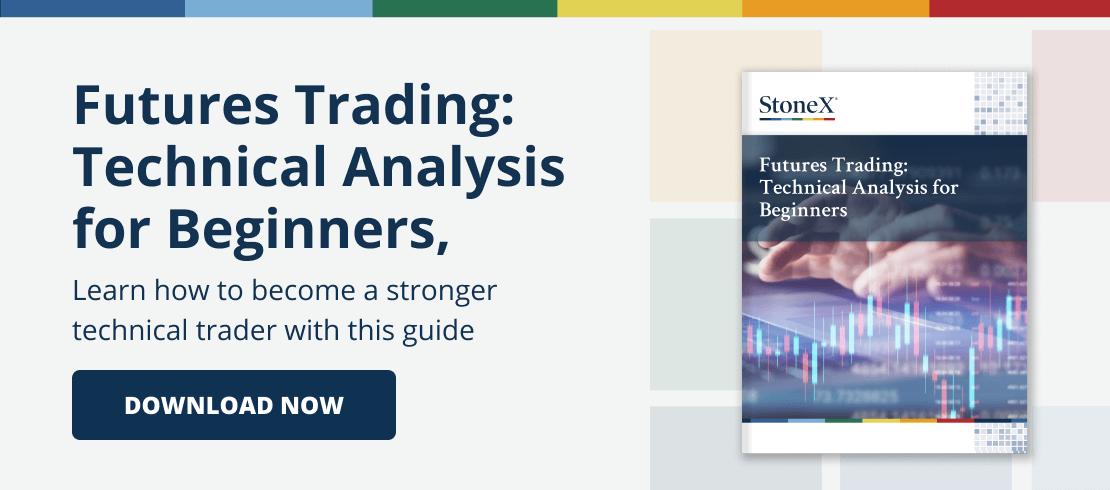Exponential Moving Average
The Exponential Moving Average gives the recent prices an equal weighting to the historic ones. The calculation does not refer to a fixed period, but rather takes all available data series into account. This is achieved by subtracting yesterday’s Exponential Moving Average from today’s price. Adding this result to yesterday’s Exponential Moving Average, results in today’s Moving Average. Note that the initial EMA is based on a Simple Moving Average.
Properties
Period. The number of bars in a chart. If the chart displays daily data, then period denotes days; in weekly charts, the period will stand for weeks, and so on. The application uses a default of 9.
Aspect: The Symbol field on which the study will be calculated. Field is set to “Default”, which, when viewing a chart for a specific symbol, is the same as “Close”.
Interpretation
An Exponential Moving Average is another type of Moving Average. In a Simple Moving Average, the price data have an equal weight in the computation of the average. Also, in a Simple Moving Average, the oldest price data are removed from the Moving Average as a new price is added to the computation. The Exponential Moving Average assigns a weight to the price data as the average is calculated. Thus, the oldest price data in the Exponential Moving Average are never removed, but they have only a minimal impact on the Moving Average.
The main use of this study is its smoothing out function. In this way, the Moving Average removes short-term fluctuations and leaves to view the prevailing trend.
The Exponential Moving Average can be used as a crossover system. For a crossover system, you may insert three different Exponential Moving Averages. Generally, the lengths for these Moving Averages are short, intermediate, and long term. A commonly used system is 4, 9, and 18 intervals or periods. An interval may be in ticks, minutes, days, weeks, or months; it is a function of the chart type.
Moving Averages work best in trending markets. A buy signal occurs when the short and intermediate term averages cross from below to above the longer term average. Conversely, a sell signal is issued when the short and intermediate term averages cross from above to below the longer term average. You can use the same signals with two Moving Averages, but most market technicians suggest using longer term averages when trading only two Exponential Moving Averages in a crossover system.
Another trading approach is to use the current price concept. If the current price is above the Exponential Moving Averages, you buy. Liquidate that position when the current price crosses below either Moving Average. For a short position, sell when the current price is below the Exponential Moving Average. Liquidate that position when the current price rises above the Exponential Moving Averages.
As you use Exponential Moving Averages, do not confuse them with Simple Moving Averages. An Exponential Moving Average behaves quite differently from a Simple Moving Average. It is a function of the weighting factor or length of the average.
Literature
Murphy, John J. Technical Analysis of the Futures Markets. New York Institute of Finance. Englewood Cliffs, NJ. 1986.
Wilder, J. Welles. New Concepts in Technical Trading Systems. Greensboro, NC: Trend Research, 1978.
Kaufman, P. J. Technical Analysis in Commodities.
Kaufman, Perry J. The New Commodity Trading System and Methods. 1987.
Murphy, John J. The Visual Investor. New York, NY: John Wiley & Sons, Inc. 1996.
Maxwell, J. R. Commodity Futures Trading with Moving Averages. 1976.
Colby, Robert F., Myers, Thomas A. The Encyclopedia of Technical Market Indicators. Dow Jones – Irwin. Homewood, IL. 1988.
Pring, Martin J. Technical Analysis Explained.
Lebeau, Charles, and Lucas, David. Technical Trader’s Guide to Computer Analysis of the Futures Market. Homewood, IL: Business One Irwin. 1991.
View Other Technical Analysis Studies
- Bollinger Bands
- Commodity Channel Index
- Crack Spread
- Crush Spread
- Default
- Directional Movement Index
- Envelope
- Exponential Moving Average
- Exponential Oscillator
- High Low Moving Average
- Highest High / Lowest Low
- Historic Volatility
- Keltner Channel
- Least Squares Linear Regression
- Line Oscillator
- Momentum
- Moving Average
- Moving Average Convergence Divergence
- Moving Standard Deviation
- Open Interest
- Oscillator
- Parabolic Stop and Reversal
- Rate of Change
- Relative Strength Index
- Smoothed Moving Average
- Smoothed Oscillator
- Stochastic
- Variable Moving Average
- Volume
- Volume and Open Interest
- Weighted Close
- What is the Slow Stochastic Oscillator?
- Williams’ %R

